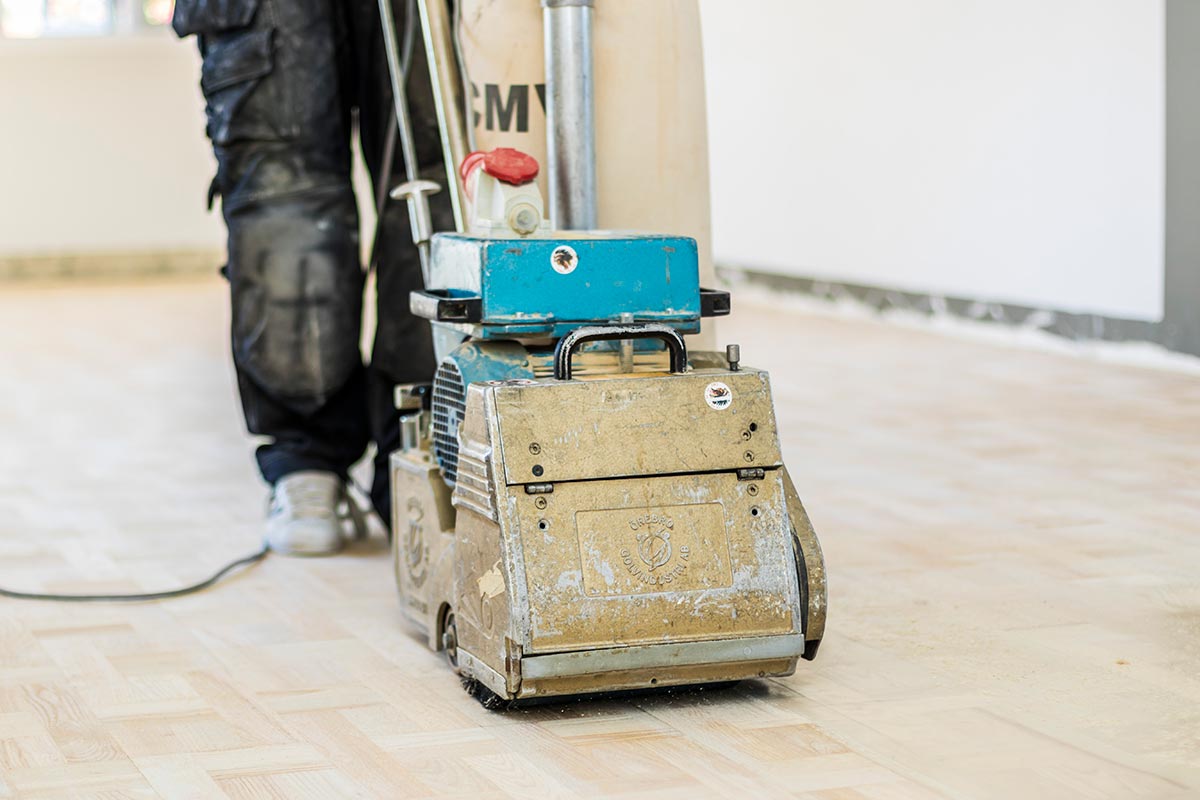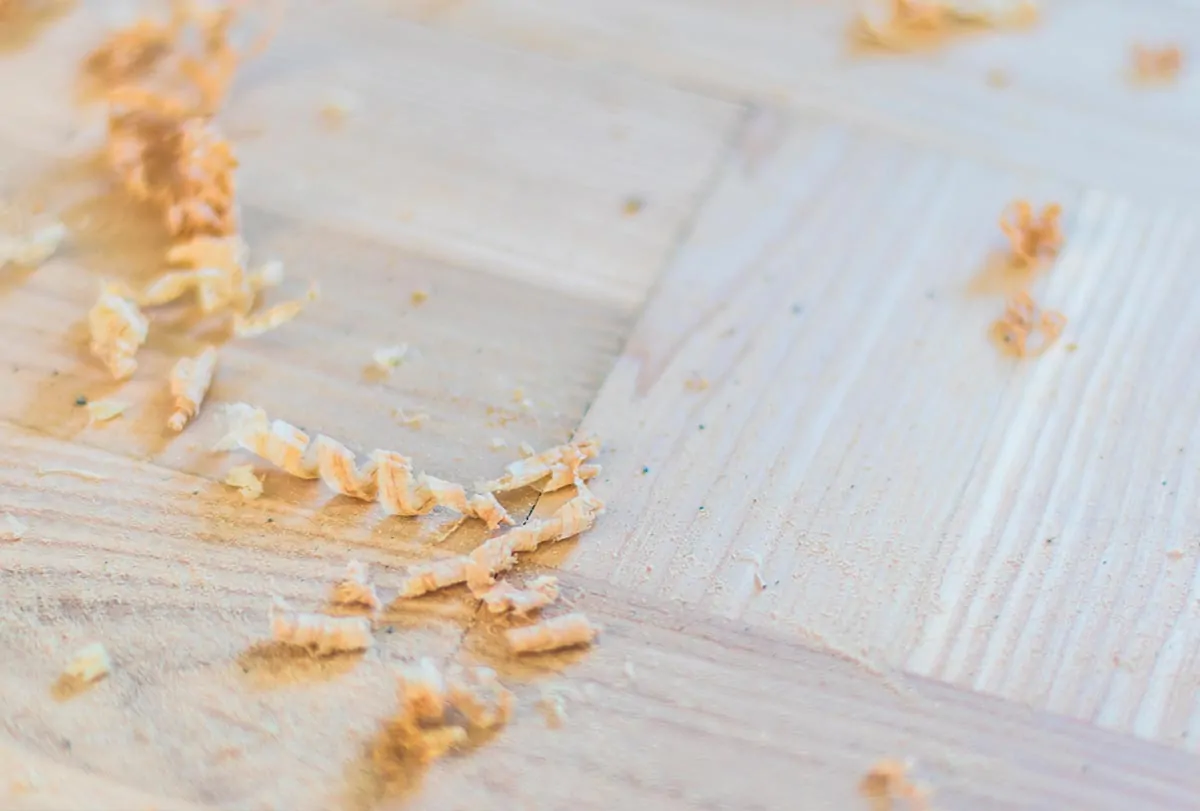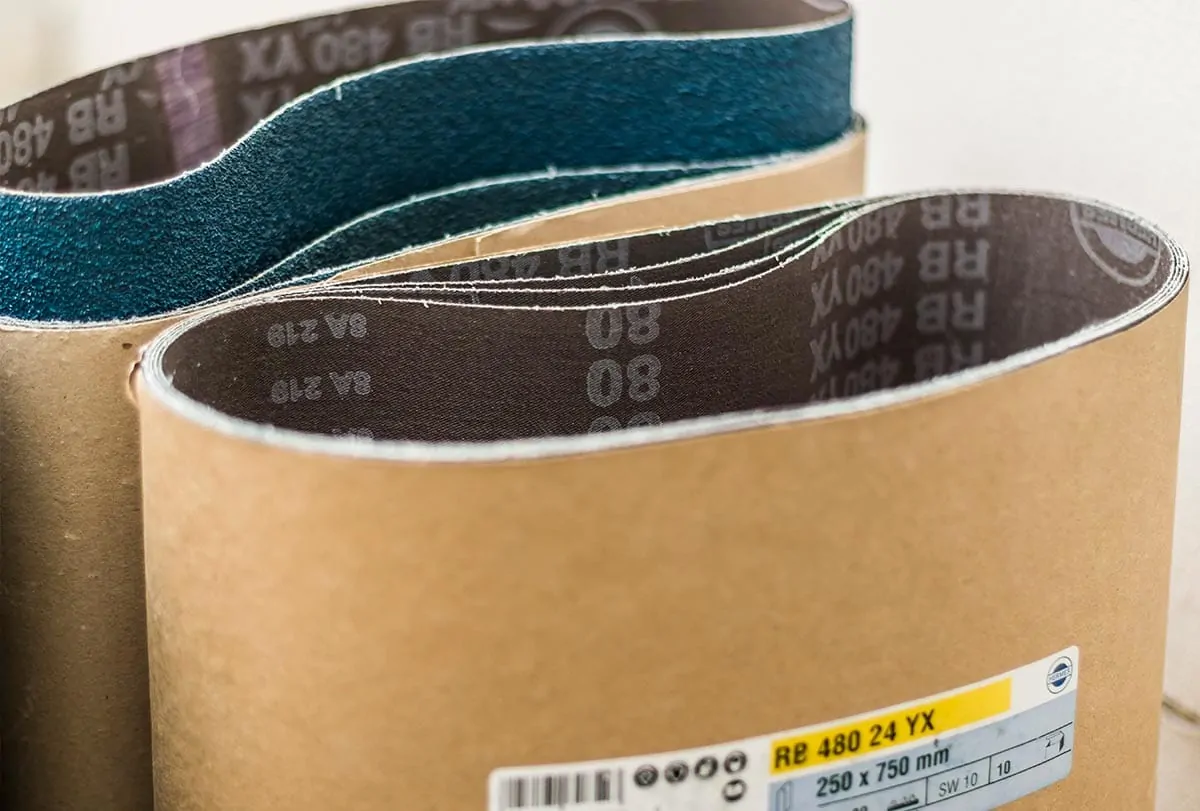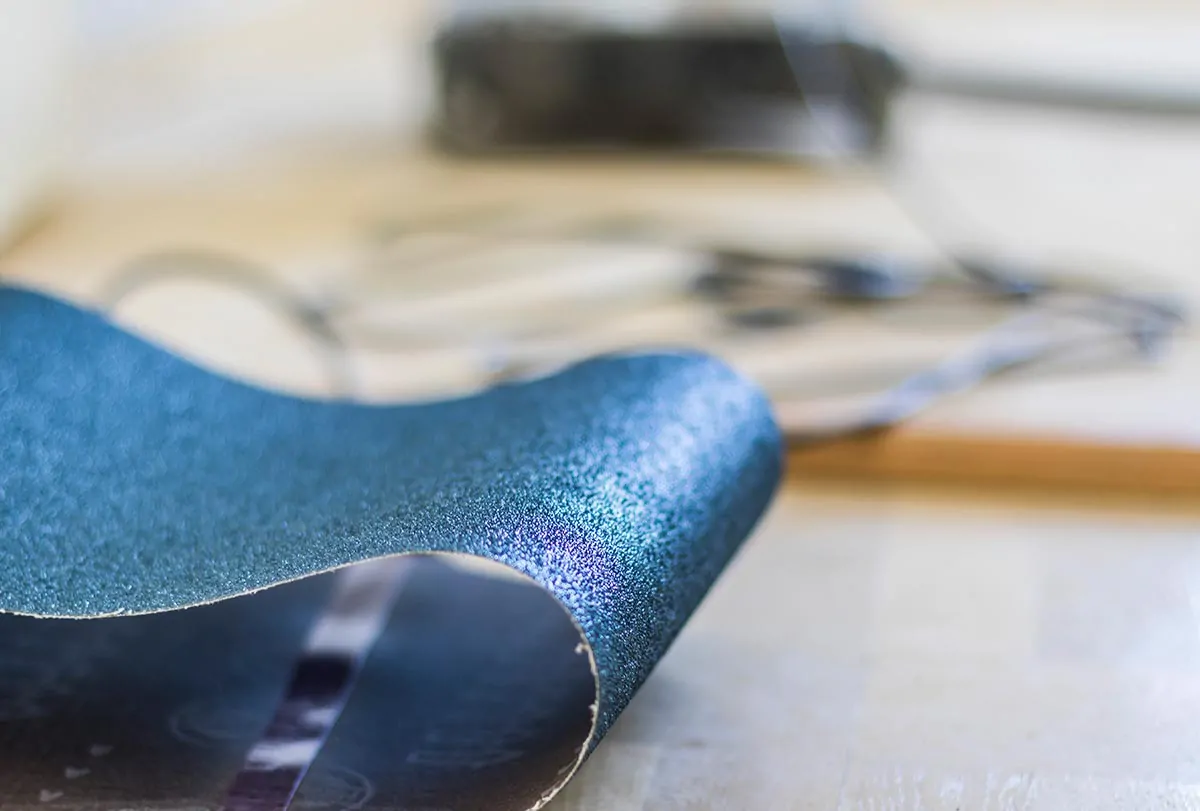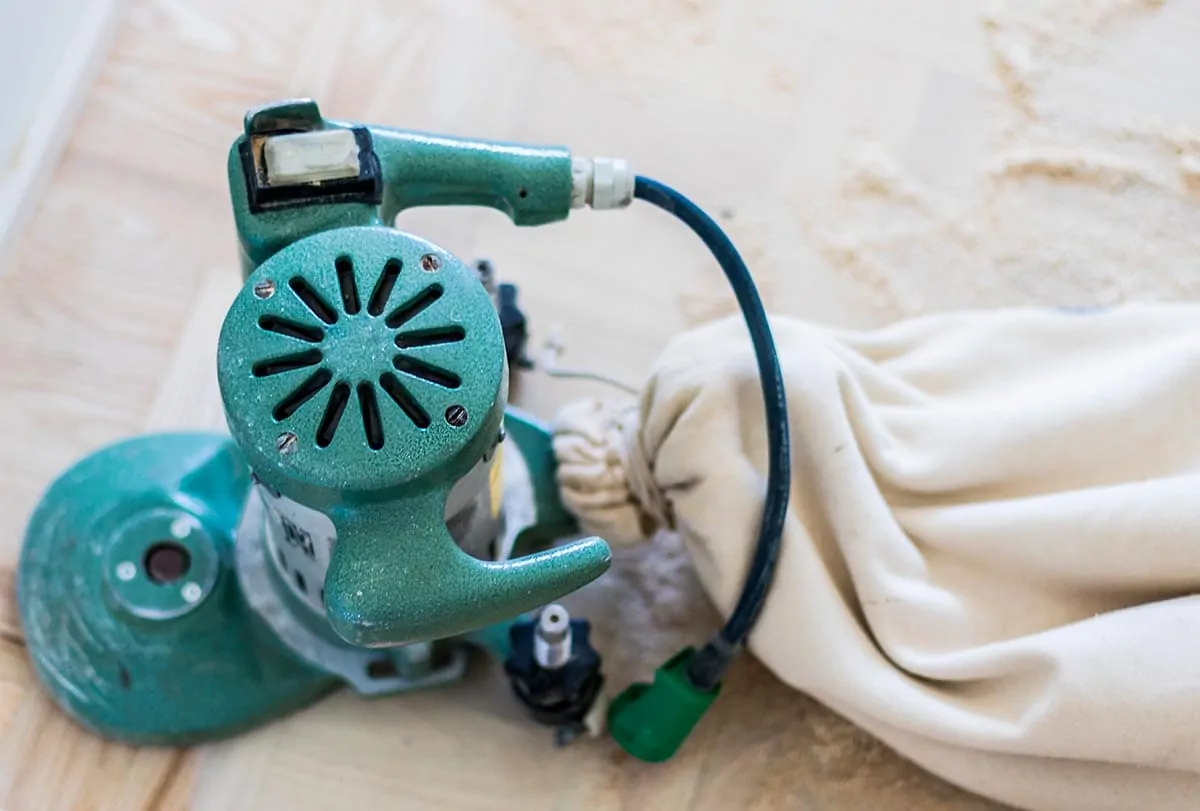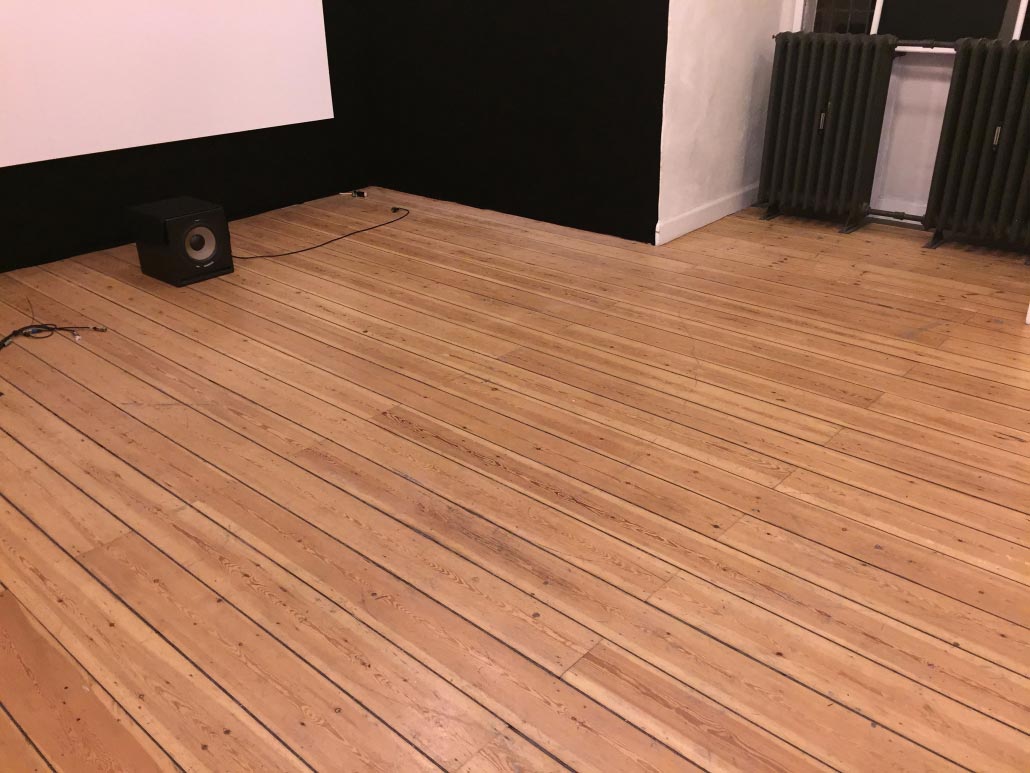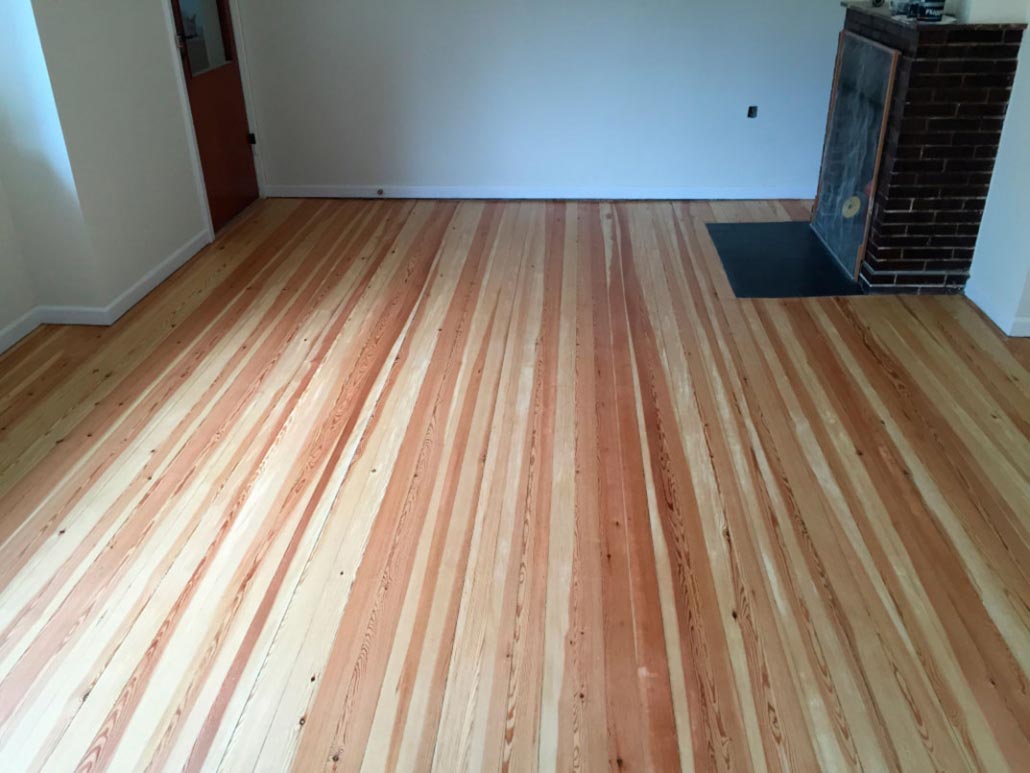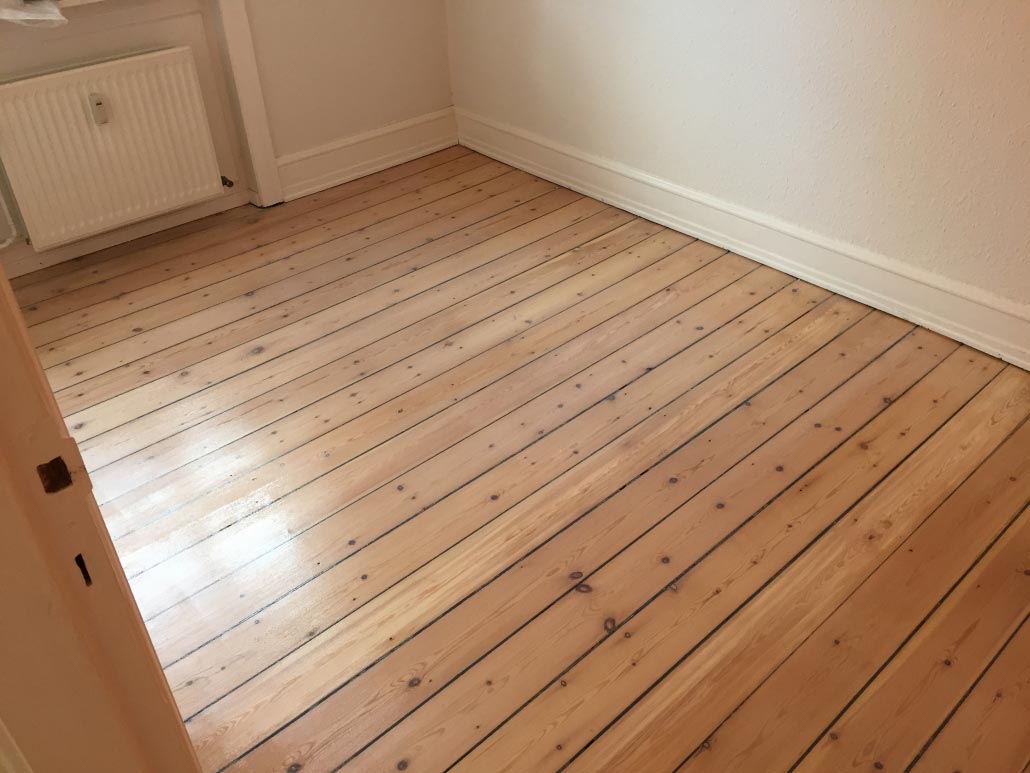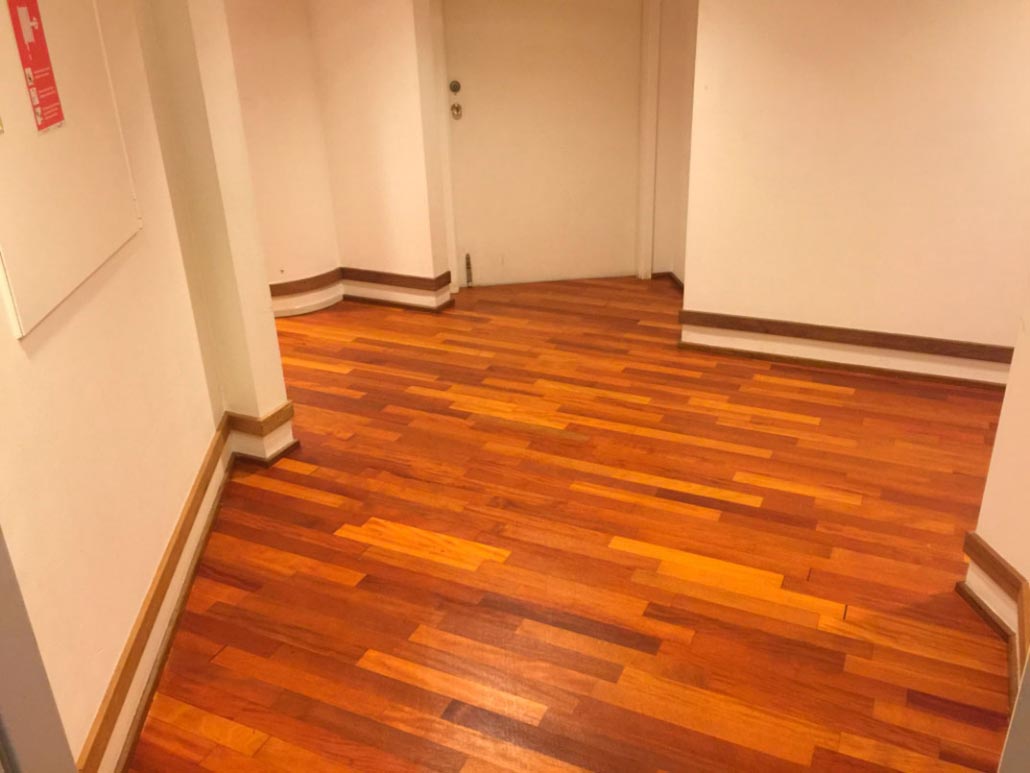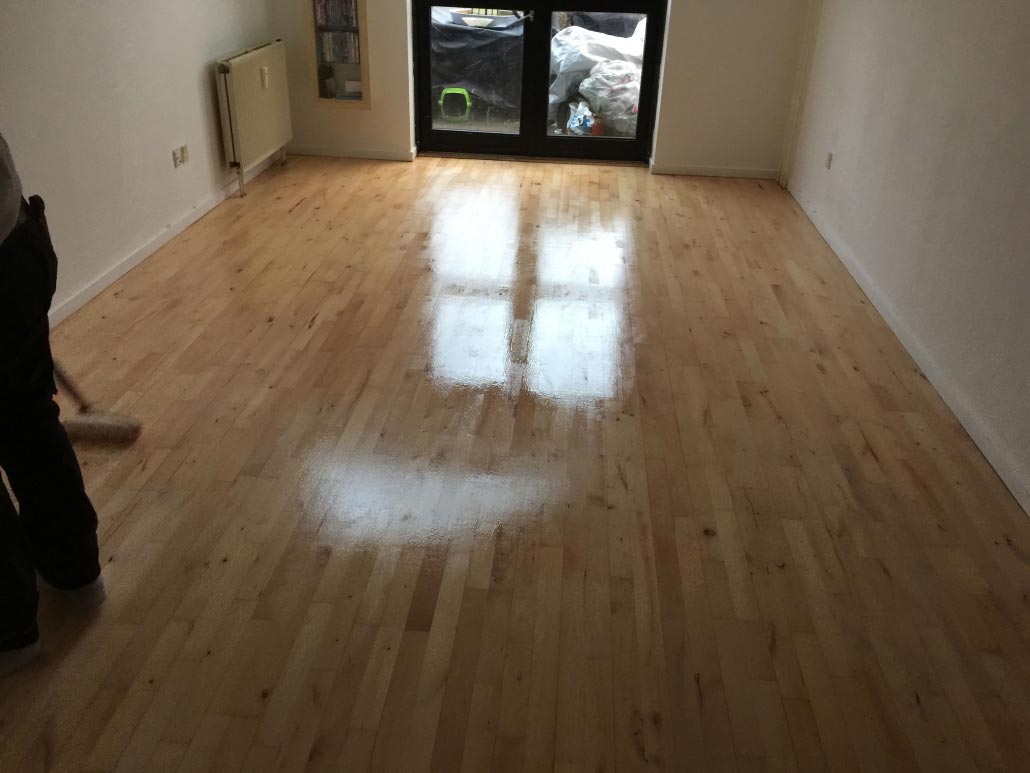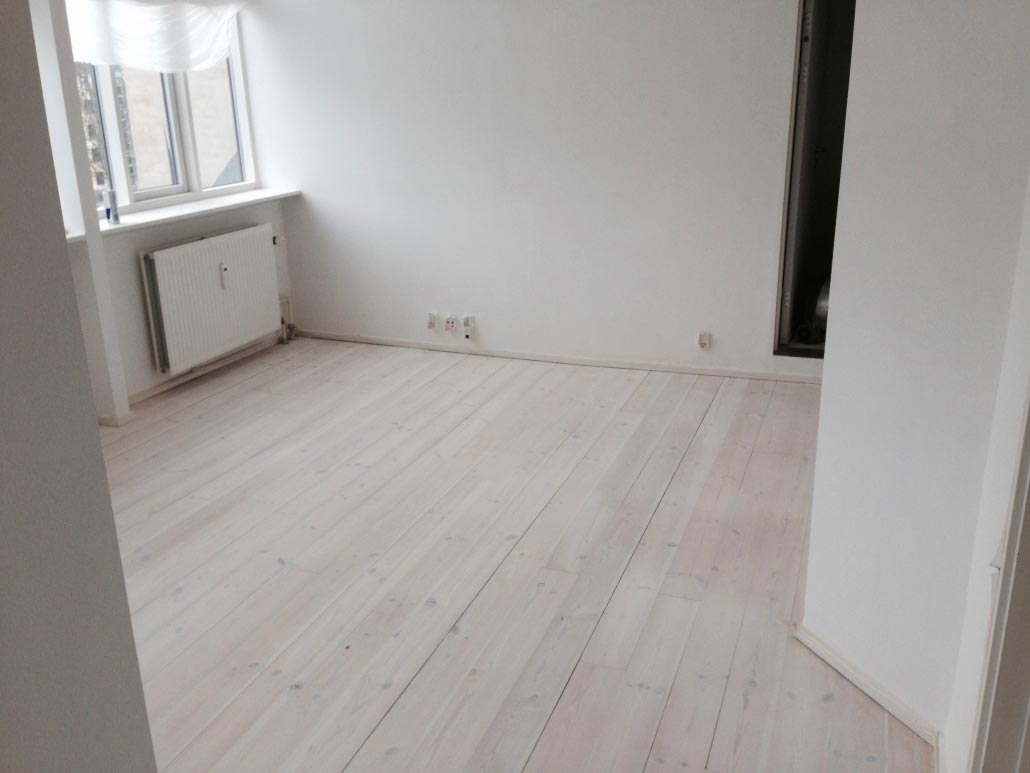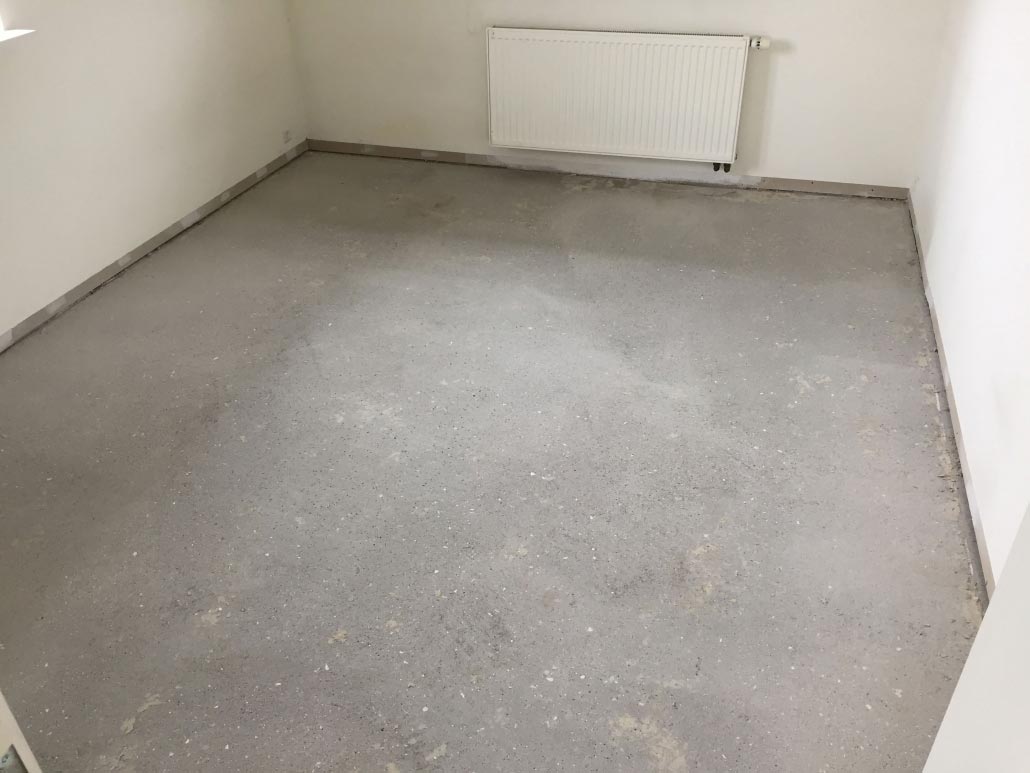WORK PROCESS
During the floor sanding process, you must not enter the room/rooms where the work is being performed. The reason for this is that the floor must not be stepped on throughout the entire floor sanding and floor treatment process, etc. If this is not adhered to, we disclaim any responsibility for the final result.
RENOVATION
If you already know that the room(s) that require(s) floor sanding is/are also going to be painted, we recommend, as a minimum, that the last paint of coat is applied after we are finished with the floor sanding and treatment. Ideally, we recommend that the painter first starts painting when we have completely finished the job.
COVERING
Before we start the job, you must ensure that the room(s) that the work is going to be completed in is/are completely empty of furniture/household effects – this means furniture, carpets, etc.
We also recommend that you empty kitchen cabinets, refrigerators, shelves, etc. If it is not possible to move everything before the work is performed, you are responsible for covering all the furniture that you wish to be covered prior to the work commencing.
It is also recommended that you cover sockets and skirting boards as the work may result in small scratches and oil/varnish/lye stains. The floors that are to be sanded must be completely cleared. If you leave furniture, this is at your own risk.
NB Floorsanding is not liable for any damage with respect to this if our recommendations have not been followed beforehand. If there is a lot of furniture left in place, you risk NB Floorsanding not being able to perform the work – and you thus risk receiving a bill for non-performed work in accordance with the approved quotation.
WALLS AND SKIRTING BOARDS
Floor sanding can cause small scratches/nicks on the skirting boards and walls. There is always a risk of scratches or oil/varnish/lye stains on walls, skirting boards and other woodwork.
It is recommended that you cover sockets and skirting boards before work commences. As we sand right up to the edges, this is unavoidable in many cases – as you naturally do not want a 1–2 cm strip around the edge of your floor where the old treatment has not been removed and the new treatment has not been applied.
Of course, our employees do their best to limit this damage.
WASTE MANAGEMENT
During the sanding process, we ensure we clean up all our waste/sanding dust from the machines – we collect this waste in clear bags and dispose of it at no cost to you as a customer.
DUST
Our machines collect 90% of the dust associated with a floor sanding – but there may be some dust remaining after the floor sanding process is completed. Our employees do their best to minimise dust and always vacuum the floors after finishing work – but it is likely it will be necessary to wipe horizontal surfaces with a dry cloth after the work is completed. Our employees will also vacuum the floor between each floor treatment – but the walls and other woodwork in the room will not be vacuumed.
With wooden flooring, there may be residue left behind between the floorboards, e.g. after varnishing.
NOTE: You should expect large amounts of dust following the sanding of stairs and floors with filler on them.
NOISE AND ODOUR
When floor sanding/treatment is being carried out, it is inevitable that there will be noise and odours.
SANDING THROUGH THE WEAR LAYER
When sanding a parquet floor, it is possible to sand through the wear layer and loose parquet strips. Unfortunately, we cannot assume responsibility for this risk, as the naked eye can never see when or if this may occur.
PARKING
If you are aware that we require a special parking permit for our vehicle(s) to park in the area or at the property, please inform us about this at the time of booking. We would also appreciate receiving a visitor pass or the like so that everything is well prepared.
COMPLAINTS
Complaints should be submitted no later than two days after the job is completed in order to agree on a time for inspecting the floor. All complaints must be sent via email to: info@nbfloorsanding.com.
Please attach a detailed description as well as pictures.
ROOM TEMPERATURE
In the room/premises the treatment is to be carried out, the temperature must be at least 18°C.
ELECTRICAL INSTALLATIONS
Wires, cables and pipes must be removed from the floor – or disassembled before the work starts. As a customer, you must make sure that there is sufficient electricity in the room/premises where the work is to be performed.
NB Floorsanding needs access to a minimum of 220V/13A 1VT. If NB Floorsanding arrives at a job and the required power is not available, the customer will be responsible for arranging and paying for the assistance of an electrician.
If the above is not observed/prepared before NB Floorsanding is to start the work, we will not be liable for any breakages, damages, or similar.
PAYMENT METHODS
Payment must be made after the completion of a job.
Payment can be made in the three following ways:
- Payment once work completed (either with cash or by bank transfer)
- Transferring the funds electronically (via bank transfer). The amount must be transferred on the day the work is completed, but no later than 12 noon. A transfer receipt must then be sent to our email: info@nbfloorsanding.com
- If the bill is to be paid from a maintenance account and it is the housing company that will pay, we need written confirmation of this sent to info@nbfloorsanding.com
All our customers receive an itemised invoice so that they can pay via online banking, at their bank or at the post office. For regular customers, cooperation agreements and businesses, we give between 5–30 days of credit.
CANCELLATION POLICY
Cancellation must be made no later than 48 hours before the agreed meeting time.
This must be done in writing by sending an email to info@nbfloorsanding.com on a weekday between 8 a.m. and 4 p.m. Emails are not read or responded to outside our standard opening hours. If this is adhered to, no cancellation fee will be incurred.
If you cancel less than 48 hours before the start of a job, you will be charged a cancellation fee of DKK 495 incl. VAT. If you cancel less than 24 hours before the start of a job, you will be billed 10% of the total cost of the job, but a minimum of DKK 995 incl. VAT.
If NB Floorsanding is turned away at the address, you will be billed 50% of the total cost of the job, but a minimum of DKK 995 incl. VAT. Please note that if you cancel after the office’s closing hours and the job is to be carried out the following date, this is considered the same as if NB Floorsanding is turned away at the address.
The office opens at 8 a.m. on weekdays and we will therefore not be able to register your cancellation before our employees arrive at the office.
SCOPE OF THE QUOTATION
Only mentioned/registered items are included in the quotation.
If you have additional things like steps, stairs, doorsteps, countertops, window frames, additional rooms, a larger area, etc., please inform us of this so we can calculate a separate additional price.
GENERAL RECOMMENDATION
We always recommend that you get your floors sorted before you paint your walls and skirting boards.
The floors can be covered after NB Floorsanding has been there and the work has been completed and thus can be protected. This is far easier than trying to ensure that your newly painted walls are covered before we come to sand the floor.
In 95% of all cases, NB Floorsanding experiences that customers are misinformed by painters when they give offers for floor and painting work. It is not true that the painter needs to arrive first.
There are simple reasons for this:
- It is far more difficult to cover the walls prior to NB Floorsanding carrying out the work than it is to cover the floor after the sanding work and then letting the painter get to work. The floors are easy to cover and protect while the walls will be extremely exposed.
- When NB Floorsanding carries out the work, we use hand-held machines that are used for edge work on the floor, amongst other things. Here there is a risk that the skirting boards get scratched a little. With some treatments, a polishing machine applies the treatment. Here you risk it spraying the skirting boards/bottom of the walls a little. It is obviously extremely annoying for you as a customer to have to re-paint your walls and skirting boards if these had been freshly painted beforehand.
- When the floors are sanded, this will obviously create a lot of dust. If the dust rises and settles on your newly painted walls, you then have to go and clean them again – which is, of course, just as annoying. If, as a customer, you still choose to have the walls painted first, you should be prepared for the walls needing to be wiped off (with a dry cloth), the skirting boards needing to be re-painted (as the hand-held machines can scratch them) and for the bottom of the walls needing to be re-painted (as, depending on the treatment applied, you risk it spraying slightly onto the walls).
GENERAL
NB Floorsanding reserves the right to change the price due to increases or decreases in the work area, changes in relation to the stated job information, impeded execution of a job, etc.
NB Floorsanding also reserve the right to correct pricing errors in the quotation.


